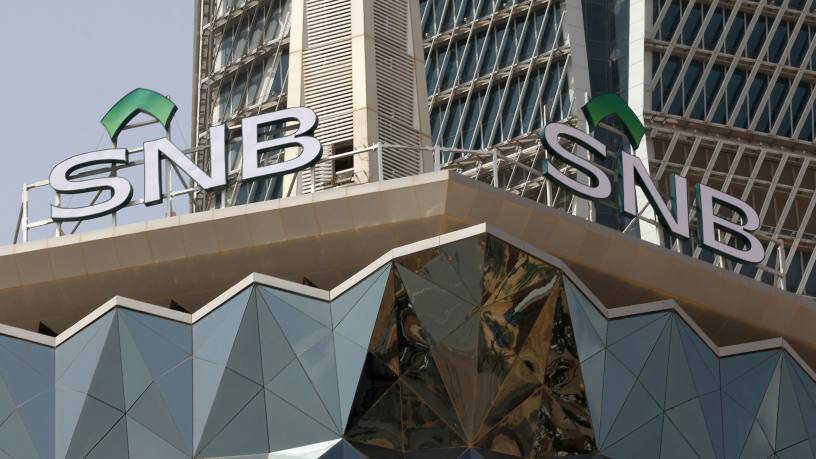Saudi Arabia’s banking sector experienced a landmark year in 2022. On the back of record economic growth, thanks to the unanticipated oil revenues windfall, profitability metrics rose to above pre-Covid-19 pandemic levels for the first time, due to a combination of surging consumer lending and lower provisioning.
After several years of mortgage-fuelled credit growth, the market has already begun to cool in 2023 as home ownership approaches government targets. Yet corporate lending is set to remain buoyant, thanks to infrastructure upgrades and projects related to the country’s ambitious Vision 2030 economic and social development programme.
The further development of the financial sector is, in itself, a key part of Vision 2030. To that end, the sector has seen significant progress in areas such as open banking, which is currently rolling out in the country, and the development of one of the region’s first central bank digital currencies (CBDCs).
Profits pass pre-pandemic mark
Annual net income for the country’s 10 largest lenders increased by 28.4% to SR62.7bn ($16.72bn) in 2022, according to data compiled by consultants Alvarez & Marsal. The aggregate net interest margin for the sector improved during the year from 2.9% to 3.05%, its first annual increase since 2019, benefiting from a series of interest rate rises from the country’s central bank (SAMA) since early 2022 that have tracked those of the US Federal Reserve.
Banks’ bottom-line gains came thanks to a 15.5% rise in operating income and a 19.5% decrease in impairment charges, with non-performing loans improving slightly from 1.6% to 1.5%. The cost-to-income ratio improved from 34.8% to 32.5% for the sector, boosted by post-merger rationalisations at Saudi National Bank (SNB) and Saudi British Bank (SABB), in addition to widespread branch closures.
Such factors boosted return on equity and return on assets to their highest levels since the pandemic, to 13.8% and 2%, respectively. Capital buffers stood at 19.9% for end 2022, unchanged as of the previous year and higher than pre-pandemic levels.
Credit easing
With the economy growing at its fastest rate since 2011, loans and advances continued to increase at a rapid clip in 2022, with the country’s booming housing market providing the main catalyst for growth. Such growth is set to cool significantly in 2023 and beyond however, thanks to a combination of higher interest rates, a more subdued mortgage market and challenging liquidity conditions prompting higher lending costs.
Loans and advances rose 14.4% during the year to SR2.2 billion, the latest in a series of double-digit rises stretching back to 2019. The past year’s growth was driven by a 13.9% rise in personal loans and a 30.7% rise in real estate lending.
Retail mortgages have been the main engine of credit growth in the country since the launch of the country’s Housing Programme in 2018. The scheme, a key part of Vision 2030, aims to increase home ownership from just 47% in 2016 to 70% by 2030, via a series of government subsidies and guarantees. Such support has made retail mortgages a critical part of banks’ offerings, with high margins enabled by the absence of caps on retail loan pricing.
The housing programme has thus far proved a huge success, with home ownership figures exceeding 60% in 2020, and the real estate sector accounting for around 7% of gross domestic product.
High rates may result in a portion of deposits migrating to interest-bearing instruments
Yet, after the unprecedented growth of the past four years, real estate financing has begun to ease. A Knight Frank survey of more than 1000 Saudis, released in March, found that appetite for purchasing a home in Riyadh had dropped from 84% a year ago to just 40%.
“New origination in January–February 2023 was already 25% lower compared with the corresponding period of 2022,” says Roman Rybalkin, an associate director at S&P Global Ratings.
“We attribute this to higher interest rates, market saturation and gradual reduction of stimuli.”
After the rapid phase of initial growth, the housing programme is set to channel subsidies put in place during the early part of the programme towards lower-income segments of society, while seeking to boost the housing sector’s attractiveness for higher private sector investment.
“The growth we’ve seen so far [in the mortgage market] has been pretty fast by any measure,” says Tony Cripps, CEO of SABB. “The fact that it’s coming down to a more sustainable level I think is a good thing.”
Mr Rybalkin told The Banker that even though the economy is set to cool in 2023/24 compared with 2022’s record year of growth, Vision 2030 initiatives would continue to support demand for corporate credit. In particular, it will help infrastructure construction and development of major projects such as the Red Sea tourism development, sports and entertainment centre Qiddiya, and real estate mega project Murabba.
S&P forecasts corporate and small and medium-sized enterprise (SME) lending to take over from mortgage loans as the largest component of private sector credit for 2023/24. While the agency has forecast that credit growth will slow to around 12% in 2023, lenders are predicting figures of closer to 8%.
“We think the finance sector should still be seeing pretty strong loan demand in the high single digits, which is a bit slower than last year, but is still pretty good,” Mr Cripps told The Banker. “The fundamentals [in Saudi Arabia] are better than just about anywhere.”
Flagging deposits squeeze liquidity
While credit has surged on the back of a highly successful mortgage market in recent years, deposit growth has perhaps inevitably failed to keep pace, with interest rates at historic lows until tightening began in early 2022.
Deposits in the banking sector grew by 8.3% to SR2.3tn in 2022, their highest since 2019. Yet, all-important demand deposits fell by 2.3% for the year, even as time deposits increased by 32.2%, with the government opting to keep its deposits with SAMA rather than with banks.
Mr Rybalkin notes that Saudi investors had in recent years invested increasingly in foreign stocks, indicating that such investments may have partially replaced deposits, with rising rates unlikely to reverse the trend.
“High rates may result in a portion of deposits migrating to interest-bearing instruments, with downside for banks’ margins,” he says, with S&P forecasting only modest increases in return on assets for the sector in the coming years.
The mismatch between loans and deposit growth has created a liquidity crunch in the country, with the sector’s loan-to-deposit ratio increasing by 5.1% to 96.7% for the year. As a result, the cost of money, as measured by three-month Saudi interbank offered rate, hit a 14-year high of 3.1% in June, prompting SAMA to intervene with a SR50bn injection.
The relief was short-lived however, with the rate rising to more than 5%, prompting SAMA to follow up with a further intervention in early December, with transactions on the open market that allowed the central bank to provide or drain short-term liquidity in exchange for securities from lenders, according to Bloomberg.
Minister of Finance Mohammed Al-Jadaan told the newswire later that month that the liquidity crisis was a temporary one driven by broader market volatility, and that SAMA had sufficient levers at its disposal to handle the crisis, prompting speculation that the central bank will intervene again with further injections if required.
Digital development
The digital development of Saudi Arabia’s financial sector continues apace, with electronic payments accounting for 62% of transactions in the country’s retail sector in 2022, exceeding the 60% target set out in Vision 2030’s Financial Sector Development Programme ahead of schedule. SAMA is now targeting increasing this figure to 70% by 2025. Point of sale transactions executed via the country’s Saudi Payment Network (Mada) increased by 40% in 2022, while Mada card online transactions grew by 76%.
After issuing its open banking policy in January 2021, SAMA published its full open banking framework in November 2022, with an initial focus on account information services to be followed in the second phase by a focus on payment initiation services. The rollout of open banking services was getting underway as The Banker went to press, with retail banks expected to have their infrastructure certified and ready for integration with third party players by March 31.
To help expedite open banking services, on April 1 SAMA announced the establishment of its Open Banking Lab, providing banks and fintechs with a technical testing environment to enable them to develop, test and certify open banking services to ensure compatibility with the central bank’s Open Banking Framework.
SAMA is also actively studying the possibility of a CBDC launch, after conducting a cross-border payment experiment in 2019 with the UAE — dubbed ‘Project Aber’ — using distributed ledger technology. The central bank hired Mohsen Al Zahrani, previously the bank’s innovation centre director and a former managing director at Accenture, to head up the bank’s virtual assets and CBDC programme.
In March, Mr Al Zahrani told The Banker that a wholesale CBDC was in “the experimentation phase”, while a retail CBDC was in the “research” phase. A wholesale CBDC could be launched as early as 2025, he said, should the regulator decide to go ahead with the project.
The digital-only players that have launched so far [in the Arabian Gulf] have not had a serious impact on the market
Meanwhile, the launch of the country’s first digital bank is likely in the coming months, three years after the publishing of guidelines for digital-only lenders. SAMA initially awarded licences to two such lenders – telco STC and a consortium led by local investment conglomerate Abdul Rahman bin Saad Al-Rashed and Sons in June 2021.
Of the three digital banks licensed so far by SAMA, STC has been perhaps the most eye-catching prospect. The operator’s payments, launched in 2018, has grown to become one of the largest payment companies of its kind in the Middle East, with a customer base of around eight million. Western Union acquired a 15% stake in STC Pay in November 2020, valuing the company at $1.3bn.
Yet it is the country’s third digital licensee, D360 Bank, that is now poised to be the first to launch services. The company, backed by sovereign wealth fund the Public Investment Fund and Riyadh-based broker Derayah Financial, said in March that its internal operations had gone live, and that it would announce “very soon” when it would begin accepting registrations.
“We see D360 Bank serving the underserved segments of banking, the country’s youth, SMEs, business-to-business markets and indeed all untapped areas of banking, with a focus on banking made simple and customer-centric,” said D360’s chairman Taha Al Kuwaiz.
Yet digital lenders have their work cut out for them in Saudi Arabia’s heavily-banked market, with new players in the region and elsewhere more often than not struggling to gain traction against established competitors.
“The digital-only players that have launched so far [in the Arabian Gulf] have not had a serious impact on the market thus far, beyond sharpening the digital focus of conventional banks,” says Asad Ahmed, a managing director with Alvarez & Marsal in Dubai.
“New entrants have to be laser-focused on knowing how to cater to well-defined market sub-segments. More universal approaches have largely been unsuccessful both in the region and elsewhere.”













